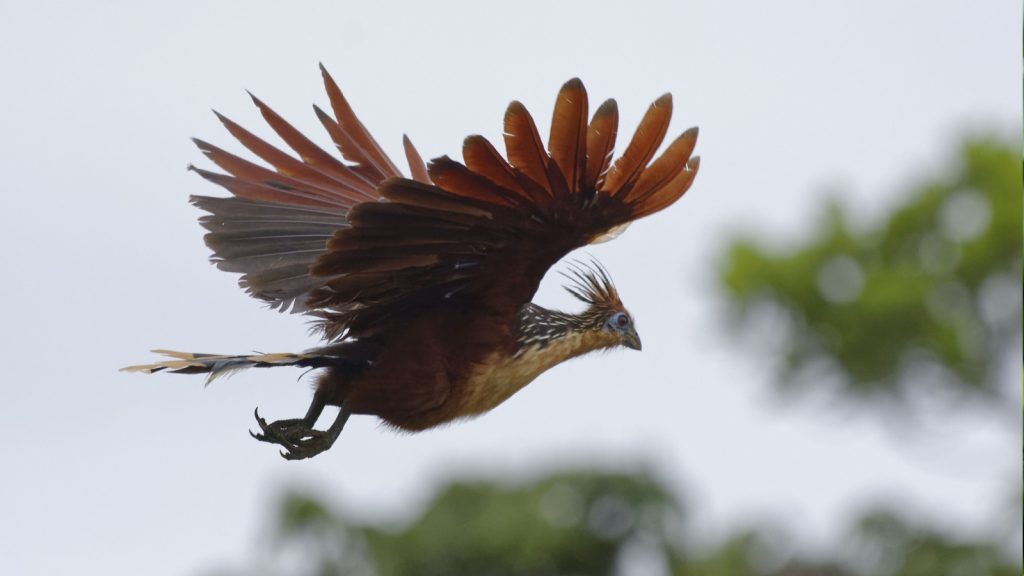Deep in the Amazon rainforest lives a bird so strange, it seems to have flown straight out of a prehistoric fever dream. The hoatzin, affectionately known as the “stinkbird,” is a feathered oddball that breaks all the rules of what we think a bird should be. With its pungent odor, cow-like digestion, and baby claws that would make a velociraptor proud, the hoatzin is nature’s way of reminding us that reality is often stranger than fiction. Get ready to meet a creature that will challenge everything you thought you knew about our feathered friends. These facts about the hoatzin will leave you amazed, amused, and maybe a little bit grossed out!
It’s Not Called Stinkbird for Nothing
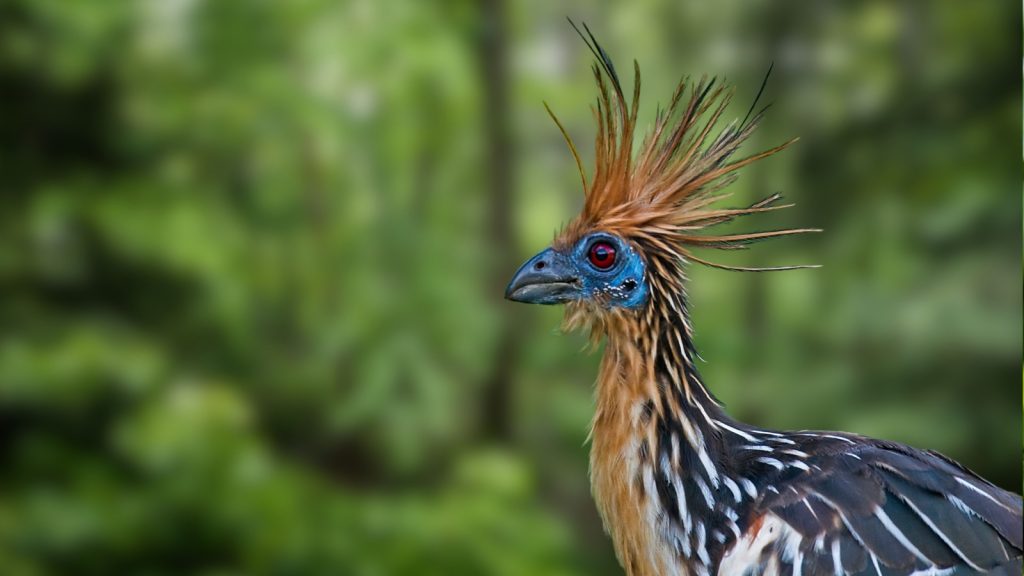
The hoatzin has earned its nickname “stinkbird” due to its foul odor, which is often compared to fresh cow manure or sweet-smelling hay. This stench isn’t just a quirk – it’s a result of the bird’s unique digestive system. The hoatzin’s diet of leaves ferments in its gut, producing smelly gases that give the bird its signature aroma.
Cow Bird in Disguise
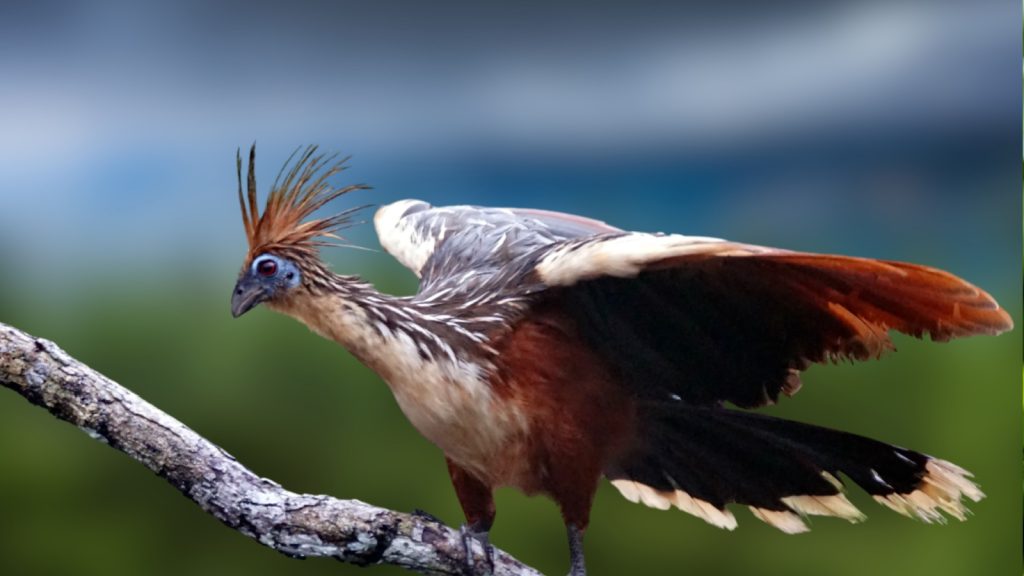
Unlike most birds, the hoatzin digests its food like a cow. It has a special organ called a crop, which is filled with bacteria that break down the tough leaves it eats. This process is called foregut fermentation, and it’s super rare in birds. The hoatzin’s odd diet gives it a big, bulky chest that makes it look a bit clumsy.
Baby Hoatzins Are Part-Time Lizards
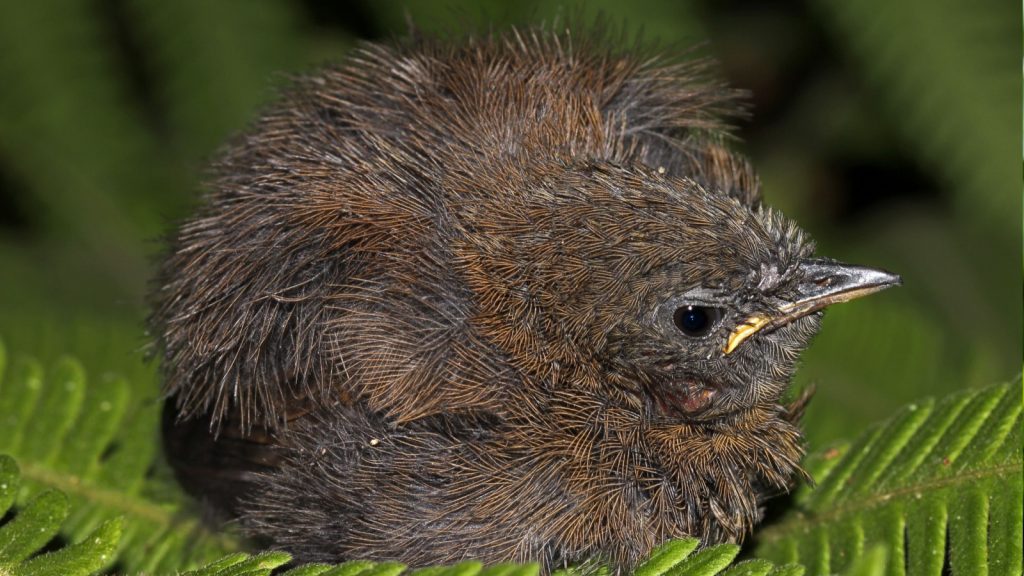
Here’s where things get really weird. Baby hoatzins have claws on their wings! These little hooks help them climb around in the trees before they can fly. If danger comes, the chicks will jump into the water below their nest and use their claws to climb back up later. It’s like they’re part bird, part lizard!
No Need for Table Manners

The hoatzin’s eating habits are pretty gross by human standards. They don’t just eat leaves – they stuff themselves until their crop is so full it bulges out of their chest. This can make them too heavy to fly well, so they often just sit around digesting. It’s not exactly graceful, but it works for them!
Blue-Faced Beauty

Despite its stinky reputation, the hoatzin is quite a looker with its distinct blue face and maroon eyes. Its head is topped with a spiky crest that makes it look like a punk rocker of the bird world. The hoatzin’s unique appearance adds to its reputation as one of the Amazon’s most eye-catching residents.
Leatherheads of the Amazon

Hoatzins have a strange, leathery patch of skin on their faces. This bare area around their eyes and beak is bright blue, which stands out against their rusty-colored feathers. Scientists aren’t sure why they have this feature, but it certainly makes them stand out in a crowd!
Noisy Neighbors
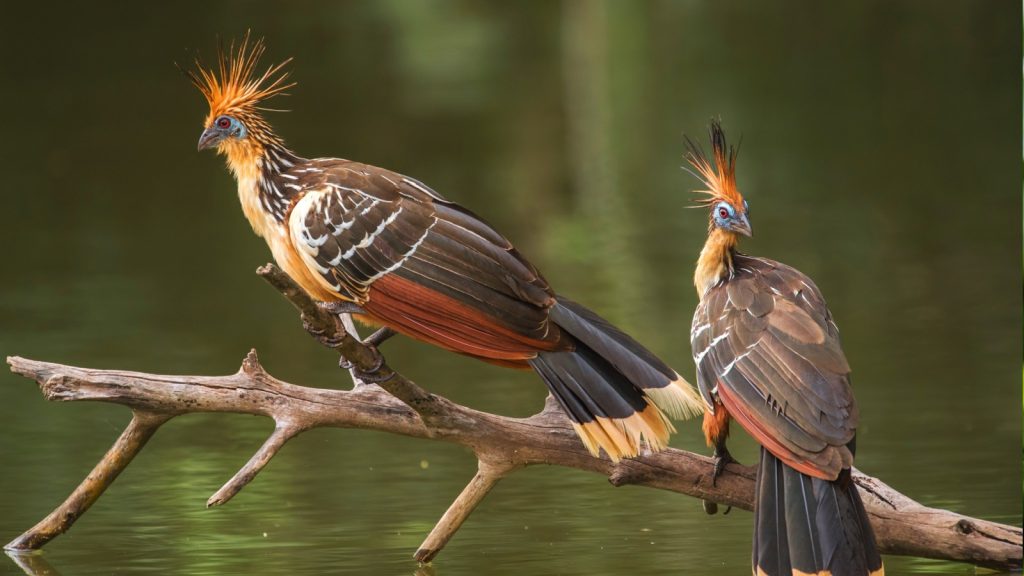
These birds aren’t known for their melodious songs. Instead, hoatzins communicate with a variety of grunts, croaks, and hisses. Their vocal repertoire sounds more like a group of grumpy frogs than what we typically expect from birds. It’s just another way the hoatzin marches to the beat of its own drum.
Living Fossils
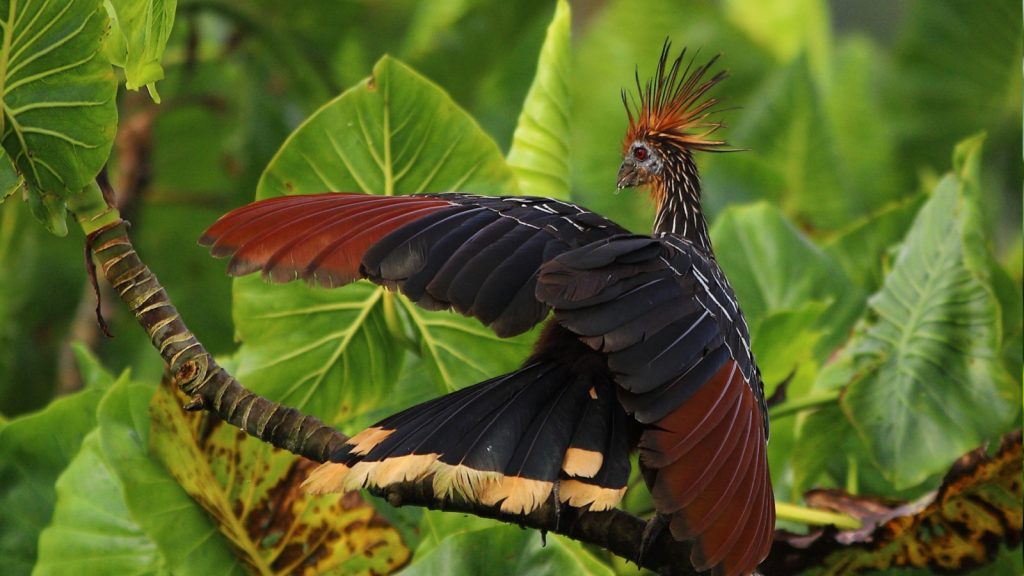
Some scientists think the hoatzin might be a living fossil, meaning it hasn’t changed much over millions of years. Its weird features, like the claws on chicks’ wings, remind researchers of ancient bird-like dinosaurs. However, the hoatzin’s exact place in the bird family tree is still a mystery that puzzles experts.
Party Animals
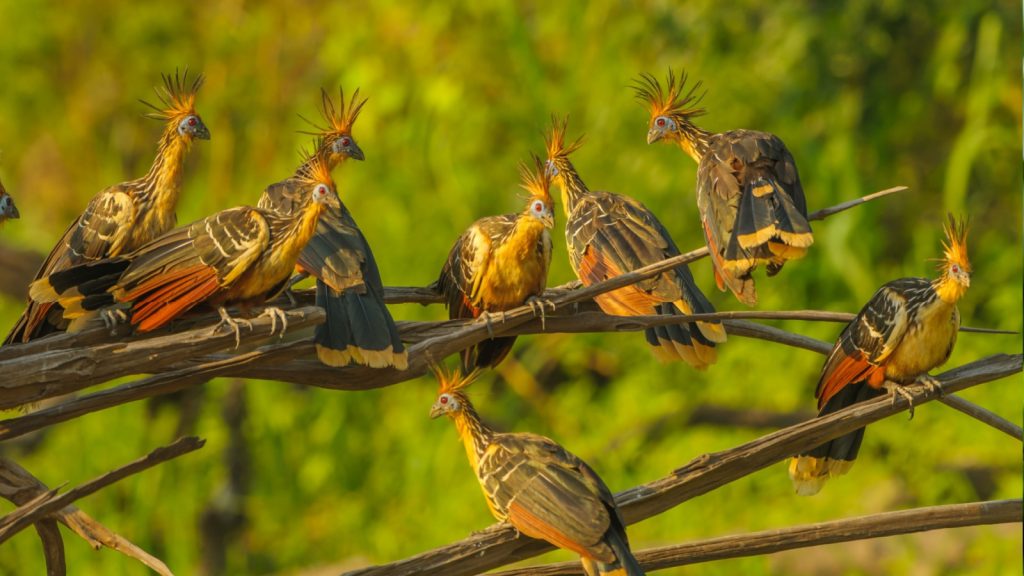
Hoatzins are social creatures that like to hang out in groups. They build their nests close together and often cooperate to raise their young. This teamwork helps protect their chicks from predators and might explain how such an odd bird has managed to survive for so long.
Leaf Eaters Extraordinaire

Most birds eat seeds, fruits, or insects, but hoatzins are almost exclusively leaf-eaters. Their diet consists of leaves, buds, and flowers from plants that grow near the water. This unique diet is what gives them their special digestive system and, unfortunately, their stinky reputation.
Homebodies at Heart
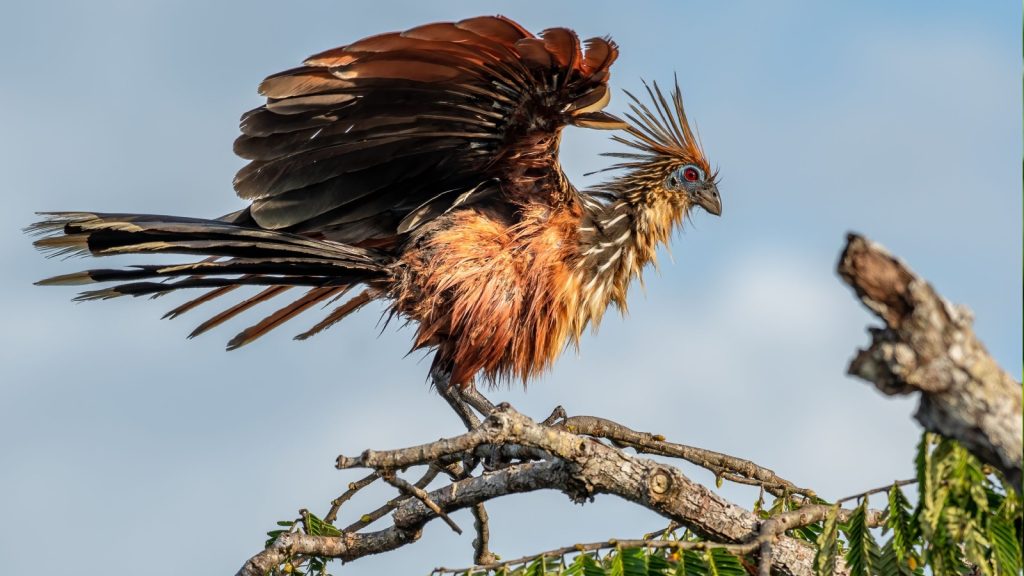
Hoatzins don’t like to travel far from home. They usually stay in the same area all year round, unlike many birds that migrate. This homebody nature means they’re extra vulnerable to habitat loss, making conservation of their swampy homes super important.
Klutzy Flyers
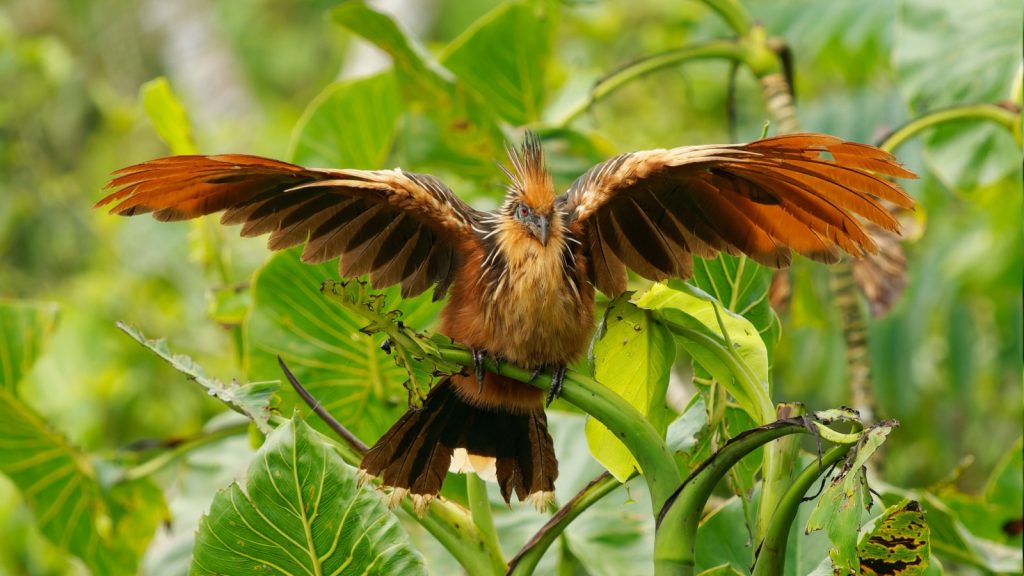
With their big crops full of fermenting leaves, hoatzins aren’t exactly graceful in the air. They’re clumsy flyers that prefer to hop and climb through the trees. When they do fly, it’s usually just short distances from one tree to another, looking a bit like a feathered football with wings.
Tough to Swallow
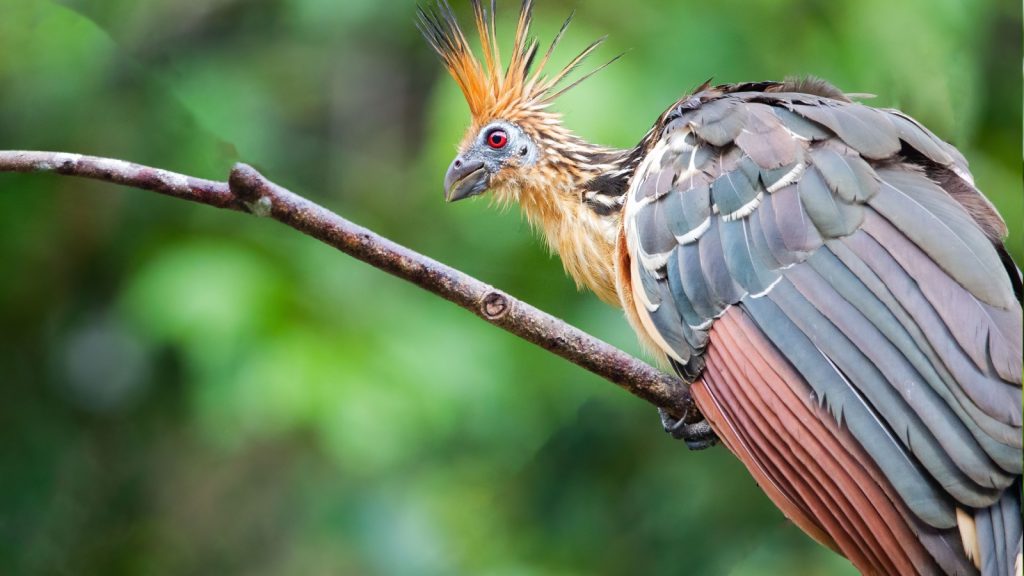
The hoatzin’s meat is said to taste terrible, which is probably a good thing for its survival. Local legends say that eating hoatzin meat can cause mental illness, though this is just a myth. Their stinky smell and tough, gamey meat have kept them off the menu for most predators, including humans.
Natural-Born Swimmers

Despite their awkward appearance, hoatzin chicks are excellent swimmers. When threatened, they’ll drop from their nests into the water below. They can swim underwater and climb back up to safety using those nifty wing claws. It’s a unique escape strategy in the bird world!
Prehistoric Punk Rockers
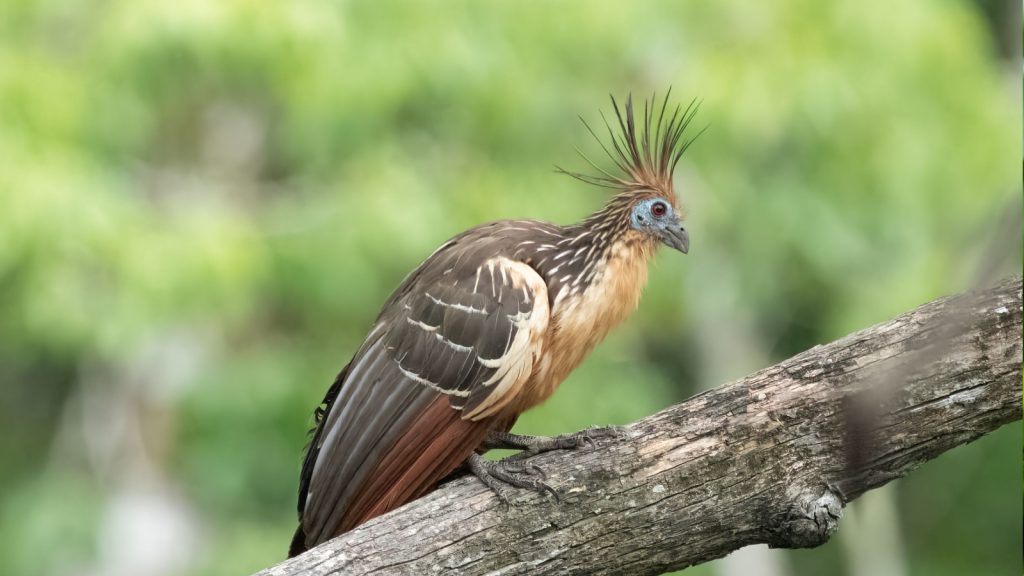
With their spiky head crests and strange calls, hoatzins look and sound like the punk rockers of the bird world. Their rebellious appearance matches their rule-breaking nature – they’re truly the misfits of the avian kingdom, doing things their own way and thriving because of it.
Masters of Disguise
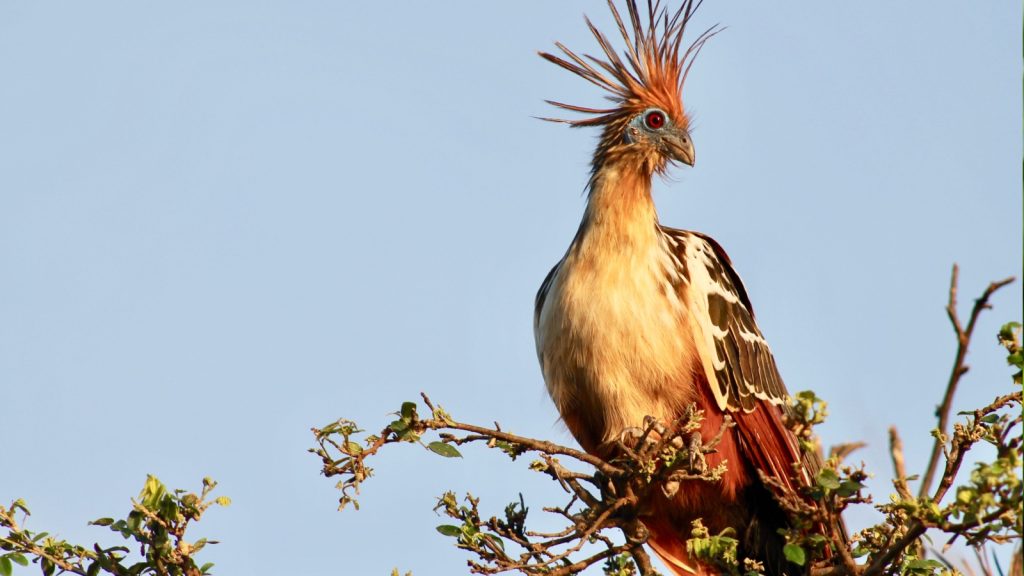
The hoatzin’s unique coloration isn’t just for show – it’s a clever camouflage strategy. Their reddish-brown feathers, streaked with white, help them blend in perfectly with the dappled sunlight filtering through the Amazon’s leafy canopy. This natural camouflage makes hoatzins nearly invisible when they’re perched in trees, despite their large size and distinctive appearance. It’s a reminder that even the most outlandish-looking creatures have evolved clever ways to survive in their environments.
Becky is a fervent wildlife enthusiast and pet care expert with a diploma in canine nutrition. Her love for animals stretches beyond the domestic, embracing the wild tapestry of global fauna. With over a decade of experience in animal welfare, Becky lends her expertise to OutlandishOwl through insightful articles, captivating wildlife information, and invaluable guidance on pet nutrition. Her work embodies a deep commitment to understanding the intricate lives of animals and a passion for educating others on sustaining natural habitats. Becky's hands-on conservation efforts and her knack for translating complex dietary science into practical pet feeding tips make her an indispensable voice for creatures great and small.

